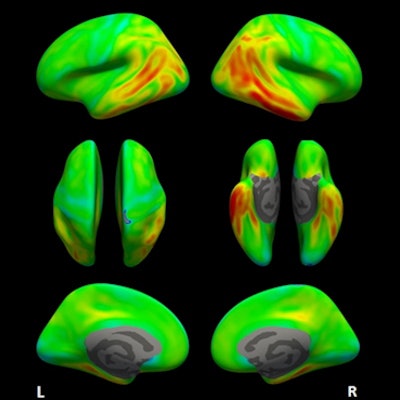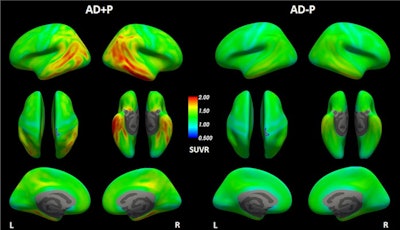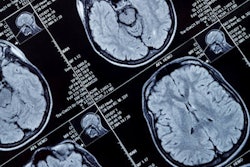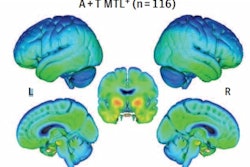
PET imaging has shown that Alzheimer's disease patients who have increases in brain tau pathology are more likely over time to experience psychosis and rapid cognitive and functional decline, according to a study published February 26 in Translational Psychiatry.
A U.S. group performed imaging in patients who had flortaucipir F-18 PET scans at baseline and who later developed psychosis and compared them with patients who underwent imaging at baseline but did not become psychotic. Patients who had higher tau pathology at baseline and increases in tau over the study period were at higher risk, the researchers found.
"Increases in tau pathology, visualized with [flortaucipir F-18] are associated with psychosis and a more rapid cognitive and functional decline," wrote corresponding author Jesus Gomar, PhD, a neuroscientist at the Feinstein Institutes for Medical Research in Manhasset, NY.
Psychosis -- the development of fixed false beliefs or disturbances of perception can -- can occur in up to 40% of patients during the course of Alzheimer's disease and is a harbinger of rapid cognitive and functional decline.
Flortaucipir F-18 (Tauvid, Avid Radiopharmaceuticals) is a PET radiotracer approved by the U.S. Food and Drug Administration in May 2020 for imaging tau pathology in Alzheimer's disease patients. Previous research has shown that flortaucipir F-18 PET imaging can help discriminate between Alzheimer's disease and mild cognitive impairment and healthy controls.
To date, however, no published studies have used tau PET imaging to study the relationship between tau pathology and the development of psychotic symptoms in Alzheimer's disease patients, the authors noted.
 Cortical uptake of flortaucipir F-18 tracer in the form of SUVR referenced to whole cerebellum cortex for each group in the study: Alzheimer's disease/psychotic-positive (P+) and Alzheimer's disease/psychotic-negative (-P). The top row displays lateral planes of the brain, the middle row superior and inferior planes, and the bottom row medial planes. Image courtesy of Translational Psychiatry.
Cortical uptake of flortaucipir F-18 tracer in the form of SUVR referenced to whole cerebellum cortex for each group in the study: Alzheimer's disease/psychotic-positive (P+) and Alzheimer's disease/psychotic-negative (-P). The top row displays lateral planes of the brain, the middle row superior and inferior planes, and the bottom row medial planes. Image courtesy of Translational Psychiatry.The group culled data on patients who had flortaucipir F-18 PET scans at baseline as part of a previous Alzheimer's Disease Neuroimaging Initiative (ADNI) study. The team compared baseline flortaucipir F-18 retention, in addition to cognitive and functional baseline and longitudinal changes, in 17 patients who became psychotic over the course of participation in ADNI with a matched group who did not.
"ADNI participants who became psychotic over the course of their participation in the study evidenced markedly increased [flortaucipir F-18] retention on PET imaging indicating a greater burden of paired helical filament tau pathology at baseline," the authors found.
In addition, although tau pathology appeared primarily focused in the left hemisphere of the brain, there were relative increases in tau in frontal, temporal, and occipital cortices -- regions known to be associated with Alzheimer's disease, the authors wrote.
The results are consistent with data from post-mortem neuropathological studies in which an abundance of tau-derived neurofibrillary tangles correlated with psychosis in Alzheimer's disease, the researchers stated.
The findings in this study provide further evidence that psychosis in Alzheimer's is a rapidly progressive clinical subtype driven by an aggressive tauopathy affecting multiple brain structures, including those that support social cognition, the researchers wrote.
"Further research is required to determine whether identification of tau pathology in these regions may be predictive in prospective studies," Gomar and colleagues concluded.



















